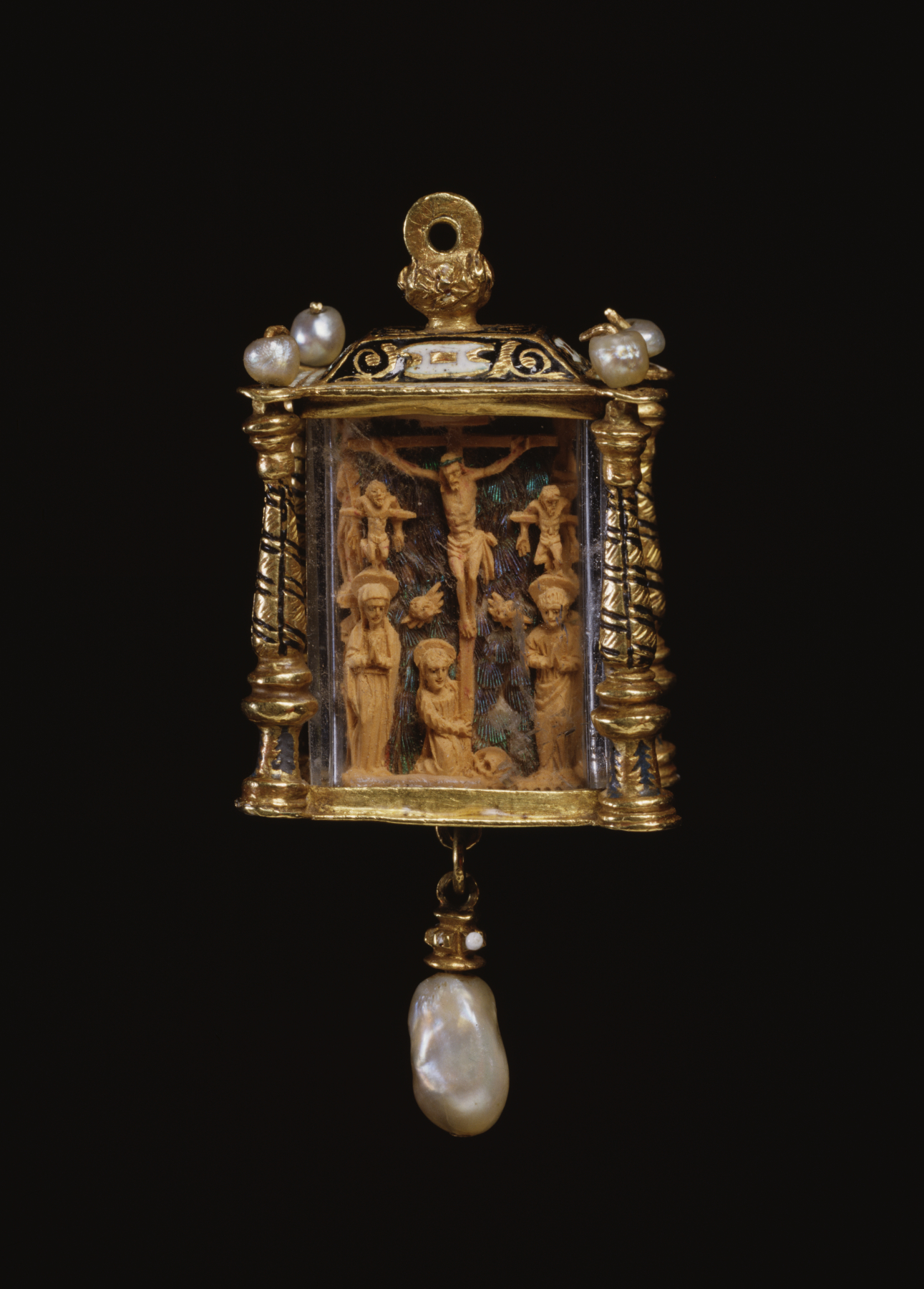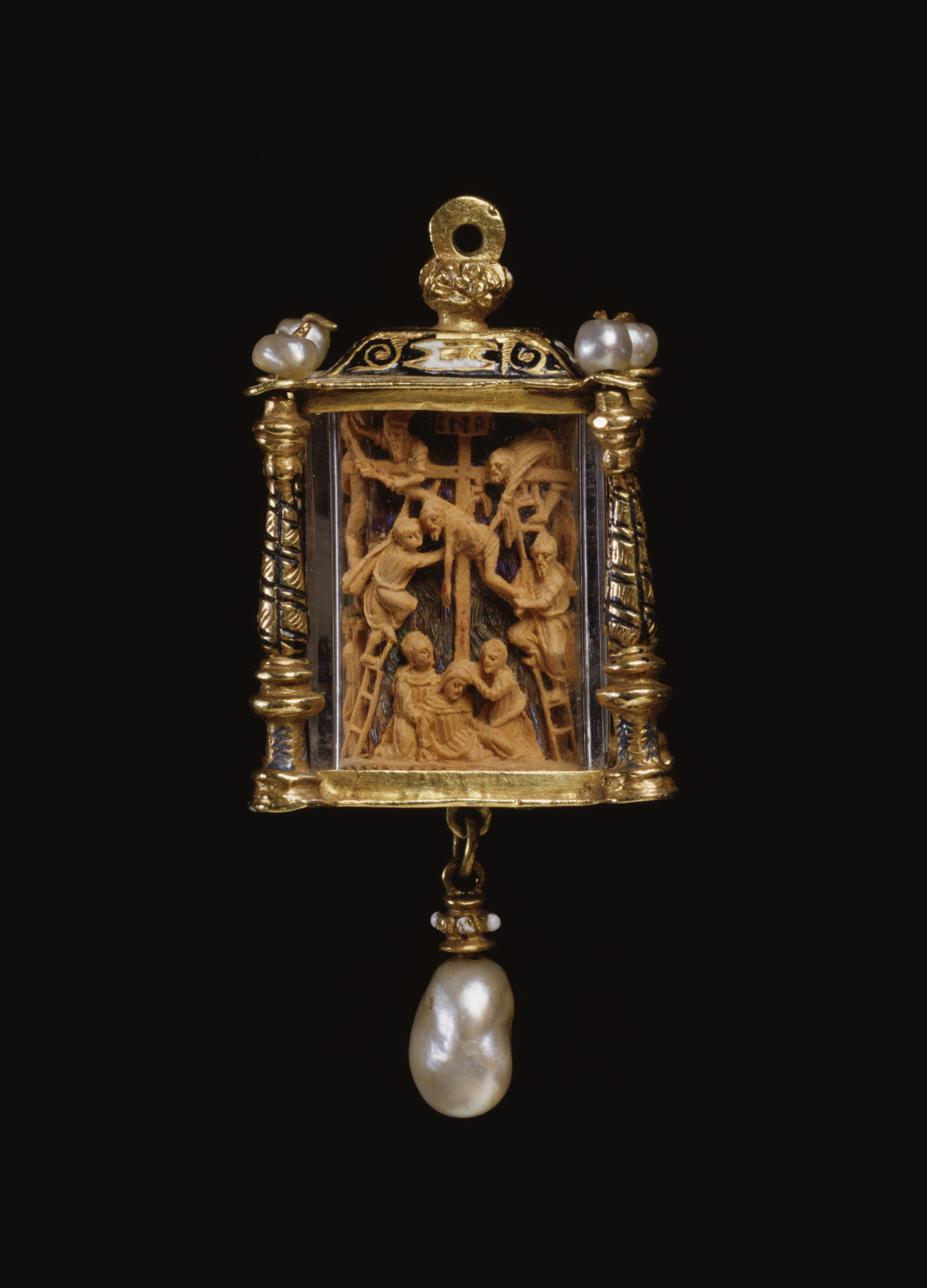Pendant in the Shape of a Lantern with Christ's Crucifixion and Deposition
(Renaissance Europe , Jewelry)
The workmanship and materials of the case are European, while the iridescent blue-to-emerald green hummingbird feathers on the inside are probably Mexican in origin and draw on the striking use of feathers by the Aztec for works of art. There remains a debate as to whether such inclusions of hummingbird feathers were done in Europe, to add an exotic flair, or in Mexico for the European market. While Mexican artists of the 1500s worked in boxwood, indigenous to the Americas as well as to Europe, this type of microcarving of Passion scenes appears to be European. Therefore this lovely pendant is here considered to be a fascinating exemple of a European artist adapting an aesthetic effect developed in the Americas, the not-quite-European aesthetic adding an exotic quality.
The boxwood shrub produces hard, fine-grained wood, permitting precise detail that holds its shape. Indeed the virtuosity needed for such a minute scale is part of the appeal.The earlier traditon of microcarving in europe is best represented in the Walters collections by Prayer Nuts, for example 61.132.
Provenance
Provenance (from the French provenir, 'to come from/forth') is the chronology of the ownership, custody, or location of a historical object. Learn more about provenance at the Walters.
Henry Walters, Baltimore [date and mode of acquisition unknown]; Walters Art Museum, 1931, by bequest.
Exhibitions
| 1979-1980 | Jewelry - Ancient to Modern. The Walters Art Gallery, Baltimore. |
| 1971-1972 | World of Wonder. The Walters Art Gallery, Baltimore. |
Conservation
| Date | Description | Narrative |
|---|---|---|
| 1/27/1988 | Treatment | cleaned |
| 1/27/1988 | Examination | examined for condition |
| 5/9/1991 | Examination | examined for condition |
| 5/1/2005 | Treatment | cleaned |
| 6/1/2005 | Treatment | cleaned; examined for exhibition |
| 11/16/2017 | Examination | Examined |
| 11/16/2017 | Examination | The each face of the wood carving is attached to a support covered with hummingbird feathers. The iridescent blue and green feathers forming the background are oriented with the tip or distal end to the bottom of the design and the calamus to the top. Each face of the micro-carvings, attached to the feather-covered ground, are carved from a single thin wood sheet with the exception of the two winged putti faces in the Crucifixion. The carvings are highlighted with red for blood, black for eyes, and blue-green glittering paint for Christ's crown of thorns and palm frond. |
Geographies
Spain
(Place of Origin)
Central America (Source of Materials)
Measurements
H with suspended pearl: 2 1/16 × W: 1 × D: 3/4 in. (5.3 × 2.5 × 1.9 cm); H without suspended pearl H: 1 1/2 × W: 1 × D: 3/4 in. (3.8 × 2.5 × 1.9 cm)
Credit Line
Acquired by Henry Walters
Location in Museum
Accession Number
In libraries, galleries, museums, and archives, an accession number is a unique identifier assigned to each object in the collection.
In libraries, galleries, museums, and archives, an accession number is a unique identifier assigned to each object in the collection.
61.120








